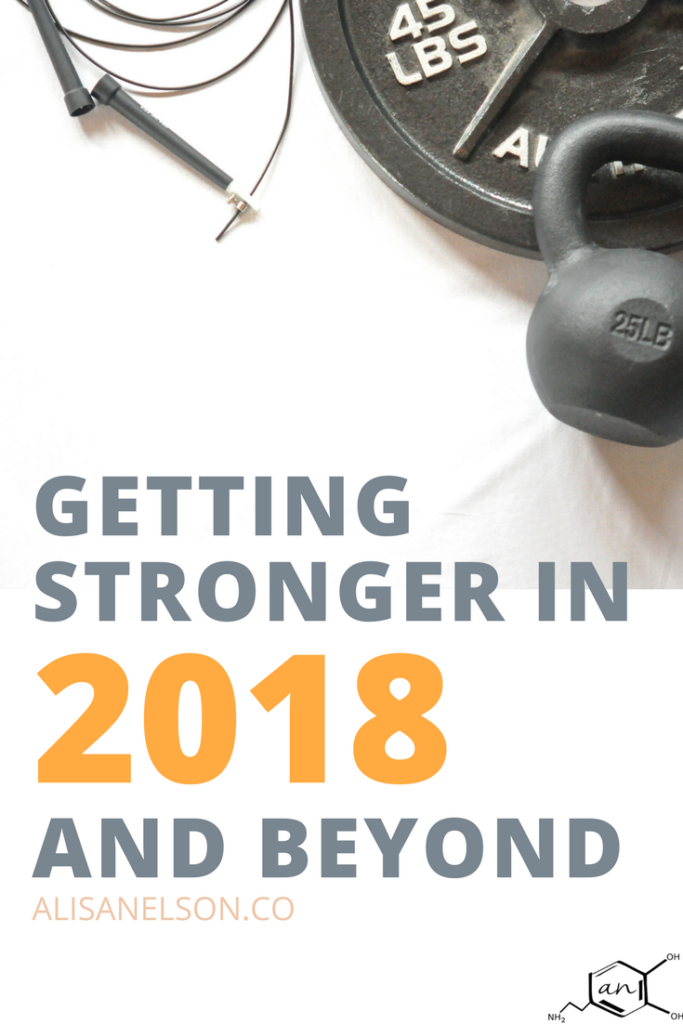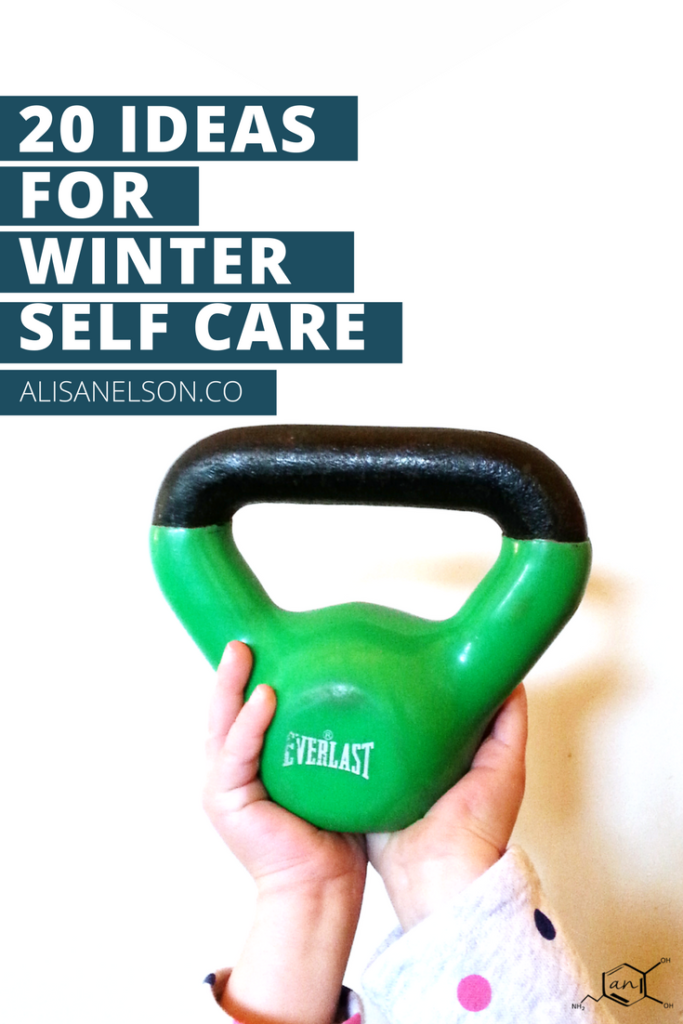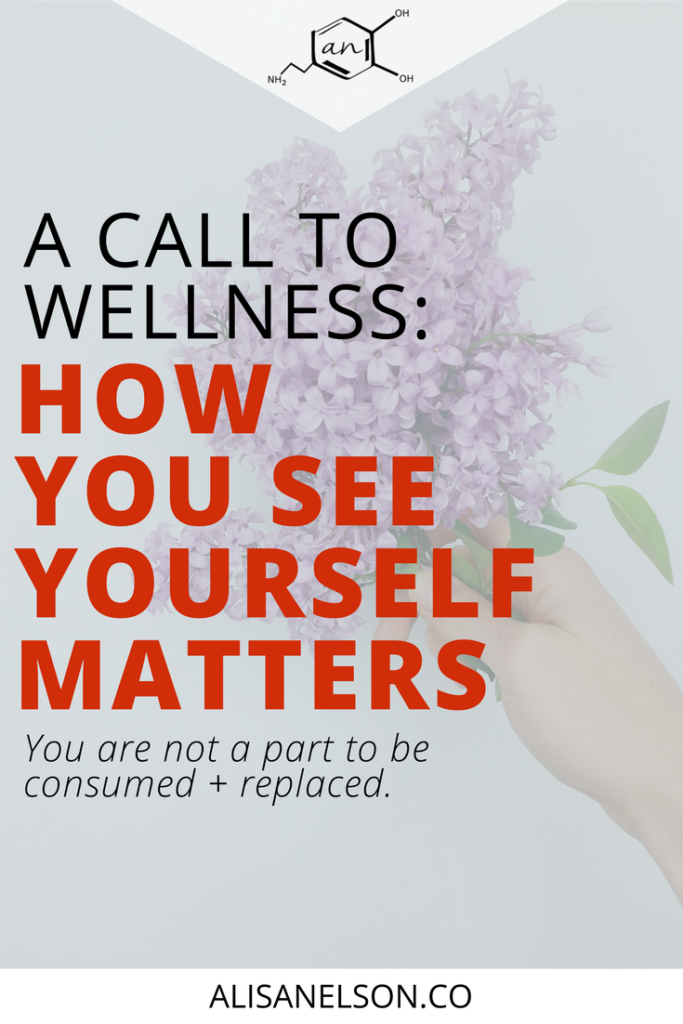Last year was a big year for me all around. Deciding to go back to school brought a slew of things to do and think about which, in itself, would take several blog posts to unpack. A second major area of growth was in my physical training – I got a whole lot fitter.

If you follow along on Instagram then you’ve seen various snippets of PRs and workouts. You’ve probably also observed that I went “all in” on the Crossfit framework. In the past I’ve done bodybuilding, general strength training, hiit, and powerlifting – all of which play a role in crossfit programming – but I’ve seen an increase in intensity and volume plus the addition of monostructural (running, rowing, jump rope, etc), gymnastics (kipping pull ups, handstand push ups, etc), and olympic weightlifting movements. In the past I have dabbled but no real time spent acquiring skill.
With all that new stuff 2017 was filled with trying a lot of new things and getting stronger in order to be more successful (and stable) in those skills. I also had to adapt quickly to the intensity part. I humbly scaled weights and exercises for workouts, confronting my “I’m fit!” mentality for one that respects my current limitations and seeks effective ways to expand my capabilities. And I also pushed hard against my long-time avoidance of sustained elevated heart rate.
Despite stepping out of my personal training business over a year ago I continue to field questions and send out recommendations for programs and tutorials whenever I’m asked. Because of that, and in an effort to externalize what I’ve been thinking about in terms of strength goals and skill development, I’m going to spend some time over a series of blog posts talking about how to systematically gain strength in 2018.
Why getting stronger is more than finishing a program
While it’s tempting to view getting stronger as simply following a designated program – indeed, that’s how it’s often done – I think it’s important to note that you can complete a program without acquiring the skill of strength training. Just as you can take an algebra class, pass, and remain to recognize when and how to use it in everyday life.
What’s the outcome of finishing a program without understanding the concepts?
- Making the same goals for your health year after year.
- Continuing to go to the gym and feel insecure in your ability to effectively use the equipment / space.
- Not being able to tell if you made any progress despite getting through the workouts.
- Meeting your goal followed by a drop in consistency and re-gaining weight / losing muscle mass or strength.
Big idea: If you’ve tried various diets and workout plans but you still ended the year feeling like all your work hasn’t added up to significant change then you need to take a different approach altogether. One that emphasizes understanding *your* body and the relevant concepts to physical transformation.
One of my personal goals with coaching was always to produce clients who could make progress independently. There are plenty of reasons to use a coach or program, but you cannot outsource understanding your own body and its capabilities. This takes time and can happen faster through the help of a high quality coach focused on equipping you [rather than focused on making money off of your shame triggers] however you must fully engage in the process.
In order to have power and autonomy in your body you must have a framework for developing your physical capacity and transforming your body as you desire. To have a framework would mean you have to have a system of concepts and methods for getting the outcome you desire for your body. It would also mean that you can effectively problem solve when you come up against something like increased bloating when you change food intake or failing to see physical changes during a program.
A quick look at what a framework in strength training might include (not in any particular order nor all-inclusive):
- Anatomy and physiology
- Muscle, nervous, and skeletal system – knowing both their individual components as well as how they coordinate to produce force that can move a load
- What muscle groups are being targeted in each movement? Where do they attach? How are they activated? What joints and movements do they drive (i.e. extension versus flexion)
- What does proper movement look and feel like?
- What are the important ingredients / players in each system? Where do they come from? How are they activated?
- Key terms like hypertrophy, aerobic versus anaerobic,
- Physics of movement / force output
- What does it mean for the body to get stronger? How are each of the above systems changed? How does a change in 1 affect the other?
- What determines the level of difficulty in a movement?
- How does each system respond to stress/overload?
- Why do we squat, press, pull, hinge? What are each of those anyway? What movements should be included in a movement?
- How does weakness in one area (like the core) affect force output and susceptibility to injury?
- Pain: Sign of injury or sign of progress? Back off or push through?
- Other-system factors – how they affect outcomes
- Nutrition
- Stress
- Sleep
- Support / Community
- Mindset
- Cross-training (conditioning, accessory, mobility, gymnastics, brute strength, etc)
- Menstruation, etc
- Metrics
- How do you know you’re on the right track?
- How do you know when to add weight?
- What kinds of changes should you expect and in what time interval?
- What landmarks make sense for each stage of experience?
- What do other markers, like sleep quality and heart rate variability, should be tracked throughout the day?
A framework gets developed over time with experience
If that list seems overwhelming, take a deep breath. Reality is that I can’t definitively tell you all you need to know about each of those items. And no doubt there are many more I could include. This gets at a major element of gaining skill: recognition that it’s a never-ending process. There are always more layers to uncover. There are countless movement variations and science cannot yet explain how all the various systems interact. So rather than feeling overwhelmed, see it as an opportunity – an area of your life that can provide endless exploration throughout your life.
As I progress through this series it will be a personal challenge to put out two or three stages of strength training skill and the concepts a person should understand at each stage (e.g. beginner, competent, proficient). I think that is about the most useful “download” I could give you. Over time I will develop similar downloads for nutrition and mindset as well.
What’s coming next
I intend to publish on the subject a couple of times per month until I’ve covered all I’d like to cover.
To end this first installment, I invite any questions you have about the above framework. Is there are particular area you’ve found to be difficult to understand? Any areas or concepts I didn’t mention that you’d like to hear about?
Finally, I’ll be making a resources page that I’ll keep updated with my recommendations on coaches, programs, and products I’ve found to be trustworthy.
Next time I’ll get into the essential skills of learning skills progressively.





